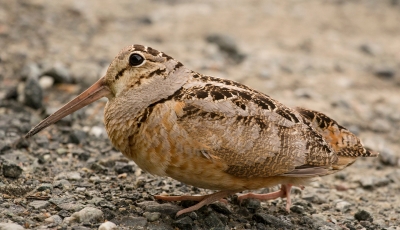You may have heard of singing birds but have you heard of dancing birds? The American woodcock is perhaps one of the most comical and cute dancing birds found in nature. Unlike the stately peacock which shakes its magnificent tail in an elegant rain dance, the homely little woodcock walks with a typical bobbing gait that looks like it is grooving to ‘Hakuna Matata’ from the movie Lion King!
This rounded, fluffy bird has a combination of brown and black feathers (rather like our own sparrow) except that it has a freakishly long beak! It uses the beak to dig out its favourite food – earthworms. Its funny walk is also supposed to make insects move on the ground, making them easier to spot.
If it perceives a threat, it freezes in response till the threat passes. Its eyes are set far back on its head, giving it a panoramic vision that helps detect predators. This biological adaptation has actually pushed its brain down and in an upside down position relative to other birds! Also, compared to other birds, woodcocks migrate at a leisurely pace. They hold the record for the slowest flight speed for a migrating bird at 8 km/h.
The woodcock usually makes its nest on the ground, concealed among fields with adequate ground cover and in shrub thickets. The female typically lays about 1 to 5 eggs and incubation lasts for 22 days. The male takes no responsibility for the chicks and does not help feed the female or offer any sort of protection to the family (rather a bad example of a parent!).
The woodcock is found in forests, fields and meadows in the eastern half of North America including Canada. It is considered the king of game birds in America and is hunted for its tasty meat in these countries.
Fortunately this plump fuzz-ball is still found in large numbers in America and is listed as ‘Least Vulnerable’ by the IUCN.
Picture Credit : Google





